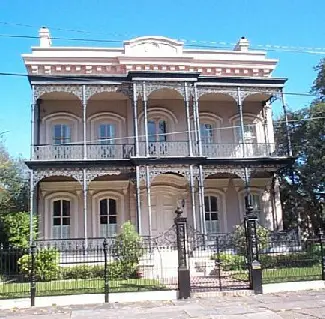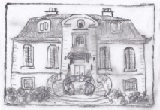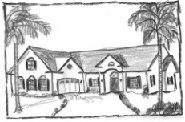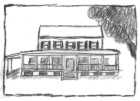- Home
- House Styles
- Southern Style House Plans
Southern Style House Plans
If you're looking for Southern Style House plans, I wrote this page to help you decide whether or not this house plan style is right for you. So to set the scene we’ll go over some of the common features of the Southern Style, then we’ll go on to discuss factors to consider if you’re thinking about going for this style.
Features of Southern Style House Plans
Southern style house plans are designed for hot humid climates and good ole Southern hospitality. The southern plantation house plans of old are the inspiration for today’s homes which share the following features.
- Usually two stories with the main floor sometimes raised above grade with steps leading up.
- Wrap-around porch on the ground floor. Some Southern houses will also have porches or even another wrap-around porch on the upper floor. The pitch of the porch roof is usually shallower than the pitch of the main roof.
- Roofs may be hipped or with gables. The second floor is sometimes accommodated in the roof with dormer windows added.
- Symmetrical facade with a central front door and the same number of rooms either side. More traditional southern style house plans will be a basic rectangular shape.
- Tall ceilings – to keep all the hot air away from the hot heads!
- Shuttered windows.
- Built of wood or brick.
 I hope my little sketches communicate the style of this type of home!
I hope my little sketches communicate the style of this type of home!Is a Southern Style House Plan right for you?
Here’s some points to consider to decide if a Southern style house plan is for you.
Flexibility – The main feature of a southern style home is the porch. If there’s a porch wrapping around a large proportion of the house then you have yourself a southern style home and you can put any floor plan arrangement you like inside. There’s also the symmetry to think about. If you’re looking for a very traditional southern style house plan, like a southern plantation house plans then remember that any square footage added or taken away from the bottom floor means the same thing happens on the top floor.
Lot Shape – With a porch on all sides it helps to have a lot with space around the house on all sides to allow for a nice outdoor porch experience. If your lot shape won’t allow for this, consider losing the porch on one side. I find myself thinking about New Orleans houses which have balconies front and back but not at the side when there isn’t enough space. In the South always spend time thinking about the orientation of your home to the sun.
Sloping Site – Southern style house plans sit best on relatively flat sites but sloping sites can be suitable. A gentle slope can be accommodated if the house is raised slightly – it just means that the basement will be a little bigger on one side. If the slope is steep it depends on the direction of the slope in relation to the position of the house. A steep slope running front (high) to back (low) can be accommodated by having another floor develop at the back of the house. This means the wrap-around porch on the main floor stays intact. A steep slope running front (low) to back (high) would be harder to accommodate in a southern style home.
Scalability – There are Southern Style House plans on the market from 1,200 sqft up to 5,000 sqft so there’s a house plan out there for all size requirements.
Expansion Potential – Depending on the pitch of the roof you choose, there may be potential to expand into the roof at a later date (The steeper the roof, the more potential for an attic). The basement might be an option – especially since some of the styles have raised ground floor which would allow light to get into the basement. Additions would be difficult to handle if the wrap around porch goes all the way round. There’s also the symmetry to consider. If the style is symmetrical an addition might sit better in the spot which impacts the view of the exterior least. For example if you want to preserve a symmetrical few from the road then the addition has to go onto the back. The option is to build away from the original property if you have room. Connecting additional buildings with a breezeway sounds like a nice idea to me.
Cost of Construction – Southern style houses can be built in a very simple shape which keeps costs low. Of course the porch (which you absolutely cannot leave out if you want to call yours a Southern home) adds to the cost but if you stick to a simple shape costs of construction can be very favorable. Of course if you go for a design with lots of corners and roof lines the cost per square foot goes up.
A brief history
The architectural style in the South is all about the hot climate. The architectural knowledge brought by the French, Spanish and the Italians started the whole style off. The Southern plantations built in the 18th and 19th centuries tried out lots of styles like French colonial, Spanish colonial, Italianate style and Greek revival but they all shared similar basic features – in particular the porch.
Destrehan Planation House, Louisiana 1787–1790. The Greek columns aren’t original. The house started out with finer posts to support the balcony. I reckon the original design might have been nicer.

The style was adapted for tighter city spaces by keeping the porches to just the front and rear.
 Carroll-Crawford House, Garden District, New Orleans
Carroll-Crawford House, Garden District, New OrleansMore house styles for you...
Here's some more house styles for you to look at.









